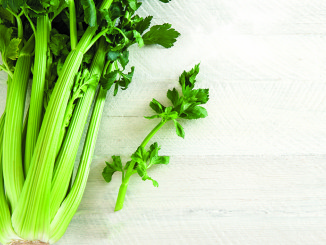
Adding a dash of herbs, a sprinkle of spice and squirt of citrus juice may be great ways to use less salt in the kitchen, but not everyone finds the results of these sodium-lowering strategies appetizing.
Saltiness is among the trickier taste qualities to mimic.  In addition to enhancing the existing flavors in foods — as opposed to adding new flavors, the way herbs and spices do — salt acts as a taste balancer by suppressing bitter compounds. On the flip side, salt substitutes, such as potassium chloride, add bitter compounds.
In addition to enhancing the existing flavors in foods — as opposed to adding new flavors, the way herbs and spices do — salt acts as a taste balancer by suppressing bitter compounds. On the flip side, salt substitutes, such as potassium chloride, add bitter compounds.
Enter glutamate. Available in both plant and animal food sources, it can be a protein-bound amino acid or exist separately as free glutamate. In addition, certain cooking and food preparations can break down bound glutamate into free glutamate. Why does it matter? Because taste receptors recognize free glutamate as umami, that elusive “fifth taste” which, while difficult to describe, increases food palatability and makes food more savory and full-bodied.
Like salt, umami enhances existing food flavors and mitigates bitter compounds; however, instead of adding sodium, it merely increases the perception of salt in foods. Umami’s characteristics are further accentuated when glutamate links to sodium molecules. Perhaps the most infamous umami formulation, monosodium glutamate, or MSG, is simply a sodium molecule linked to a glutamate molecule extracted from fermenting molasses or sugary starches.
Foods containing glutamates naturally yield MSG, and neither the body nor the taste buds distinguish between glutamate naturally present in food proteins or MSG. While impacts on sodium-reduction efforts in food manufacturing can be significant — with commercial umami formulations achieving favorable results with 30 percent to 50 percent less sodium — amplifying umami also can serve as a technique for home cooks and recipe developers looking to create meals that deliver the same savory satisfaction.
- Mushrooms and Nucleotides
Mushrooms add earthy, umami notes to foods, and dried or powdered versions, particularly shiitakes, offer concentrated umami. In addition, mushrooms contain umami-boosting nucleotides (guanylate and inosinate), which accentuate the sensation of umami and salt perception by changing how the taste receptors interact with glutamate. These nucleotides are mostly found in meat, fish and poultry, but guanylate is high in some mushrooms, including dried shiitake and morels. - Fermented and Aged Aminos
The traditional cooking processes of aging, drying and fermentation create high levels of free glutamates, which is why certain foods — think miso, Parmigiano-Reggiano cheese, tamari, prosciutto, Worcestershire sauce, anchovy paste and yeast extracts, such as marmite— are so very savory. These are not low-sodium foods, but a little goes a long way — and they can serve as tools to help people transition away from high-sodium diets without sacrificing flavor. For example, Worcestershire sauce has 65 milligrams of sodium per teaspoon compared to salt, which has 2,300 milligrams of sodium per teaspoon — the daily maximum intake recommended for a healthy person. - Nutritional Yeast
Originating from the same strain as brewer’s or baker’s yeast, this powdered or flaked ingredient offers a full range of essential amino acids, including glutamate and a variety of B vitamins. Nutritional yeast adds only 5 milligrams of sodium per serving — about three tablespoons — and may be used to enhance flavor, thicken liquids and simulate “cheesiness” in pesto, risotto and mashed potatoes, and on popcorn, salads and roasted vegetables.
Building Flavorful Lower-Sodium Dishes
While animal proteins contribute glutamate and nucleotide components for umami and increased salt perception, plant-based umami options add fiber and fewer calories. Many culinary foundations rely on aromatics such as onions, celery and garlic to boost umami. Kombu, dried seaweed and mushrooms — particularly dried shiitakes — create more complex, low-sodium broths for stews, soups or braising liquids.
Stews, sauces or braising liquids can benefit from a hint of tomato paste, and rehydrated dried tomatoes have more than twice the level of free glutamates as fresh tomatoes. Pasta dishes with roasted tomato sauce, porcini mushrooms and toasted walnuts concentrate umami deliciousness. Powdered forms of dried tomatoes and mushrooms offer a convenient addition of umami to vegetable or meat burgers, sauces, omelets, stews, sautéed greens, bean dips, bread and soups. Stir-fry dishes, virtual salt licks of the culinary world, can be made low-sodium and savory with umami-rich vegetables such as Chinese cabbage, broccoli, garlic, onions and shiitake mushrooms and a hint of Chinese black vinegar.
Meals like these may help individuals kick their takeout habit, so consider creative ways to deliver low-sodium, umami-intense and nutrient-dense foods people will crave. 












